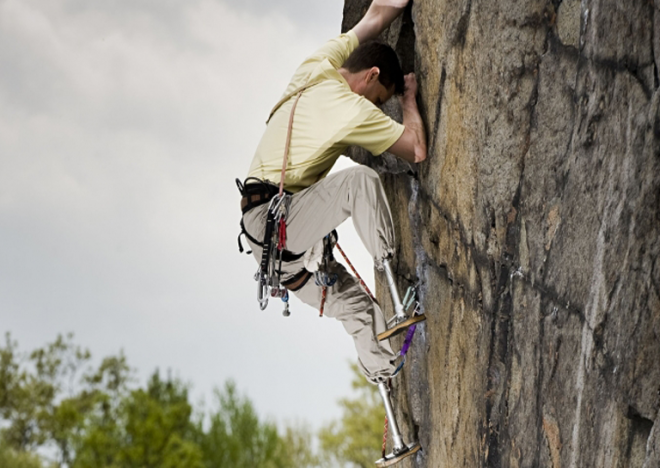
“At the beginning of that year society said I was broken,” said Herr. “One year later I had surpassed my pre-amputation climbing abilities and done climbs no climber had ever done. I had augmented my body within 12 months, so much so that a few competitors were threatening to cut off their own legs”
Herr became and engineer and decided to specialize in robotic prosthetics. He is now the head of the MIT Media Lab’s Biomechatronics group which develops new types of prosthesis for amputees. These prosthesis not only have a beautiful design, they are also intelligent, being controlled by thought. When the brain gives an unconscious command to move the leg that is no longer there to respond, programmed microprocessors stimulate an artificial tendon, simulating those movements on the prosthetic leg. It makes the artificial limb an integral part of the body. And it doesn’t stop there: it also has touch sensors, which means you can feel the ground you step on as if it were your real foot.

Hugh says that his team develops a new software or some new part for the prosthesis pretty much every week. And in recent years this process has accelerated. Herr found Adrianne Haslet-Davis, a dancer who lost her left leg in the 2013 Boston Marathon bombing. He decided to create a special prosthesis for her, one with the parts and the software necessary to allow her to dance again, which she did on the TED stage during his presentation.

The presentation itself was an extremely important step in the proper development of the prosthesis. By making a perfect TED presentation, Hugh and his team caught the attention of many people to the work being done to recover amputees – the video presentation had millions of hits.
And drawing attention means receiving more investment to continue the research.
Watch his inspiring TED presentation where he shows his incredible technology in a talk that’s both technical and deeply personal.

